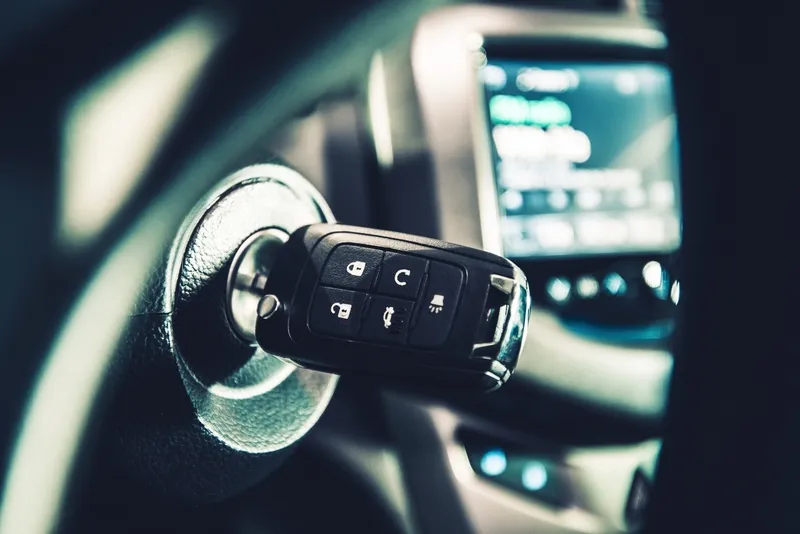
Even though pedestrian deaths in the US were down 4.3% last year, drivers struck and killed 7,148 people, according to the Governors Highway Safety Association (GHSA).
Pedestrian fatalities remain nearly 20% above the 2016 level and reached a 40-year high in 2022.
The decline in 2024 was the second consecutive annual drop after surging throughout the prior decade, notes the GHSA.
GHSA’s new data analysis, Pedestrian Traffic Fatalities by State: 2024 Preliminary Data, provides a first look at pedestrian safety trends and changes in fatalities at the state level. The analysis builds upon a report GHSA issued earlier this year that focused on fatalities for January-June.
The latest report includes an in-depth analysis of 2023 data from the National Highway Traffic Safety Administration (NHTSA), an agency within the US Department of Transportation.
It reaffirms troubling trends regarding deaths of people on foot happening in hit-and-runs, at night, in crashes with SUVs and pickups and where there are no sidewalks (pavements).
The report highlights how State Highway Safety Offices (SHSOs) and their partners are using enforcement, data, technology, education, infrastructure and other solutions to improve pedestrian safety.
“The second straight year of fewer pedestrian deaths is a step in the right direction, but much more must be done to protect people walking,” said GHSA Jonathan Adkins, chief executive officer of the GHSA.
“Now is the time to double down on what works, more and better infrastructure, enforcement to deter dangerous driving behaviour, engaged and informed communities and vehicles designed to protect people on foot. An all-in strategy to address pedestrian safety will help us build on this recent momentum and save even more lives.”
In addition to providing a first look at state-level fatality figures, the GHSA report examines 2023 data from the report Fatality Analysis Reporting System, published by NHTSA. The report examines when, where and how drivers strike and kill people who are on foot.
It concludes that one in four pedestrian deaths is the result of a hit-and-run incident. Over the past five years, 25% of fatalities have involved an incident where the driver flees the scene.
Also, pedestrian deaths are increasing at a rate far faster than overall traffic fatalities. Between 2009 and 2023, pedestrian deaths rose 80%, while all other traffic fatalities increased 13%.
There were 225 fewer pedestrian deaths in 2023 compared to the year before, but there were 1,478 fewer fatalities from all other traffic crashes.
The share of pedestrian deaths caused by SUVs and pickups has surged in recent years. The number of pedestrian deaths involving passenger cars and light trucks, including pickups, vans and SUVs - sport utility vehicles - was largely similar for much of the 2010s.
However, a significant gap has emerged and grown since 2019. Light trucks accounted for 54% of pedestrian fatalities where a vehicle type was known in 2023, compared to 37% for passenger cars.
Meanwhile, more than three-quarters of pedestrian fatalities occur after dark, and number has “skyrocketed” recently. Fatal pedestrian crashes at night nearly doubled from 3,030 in 2010 to 5,578 in 2023. That’s an 84% increase, compared to a 28% rise in daylight fatalities -from 1,092 in 2010 to 1,396 in 2023.
Nearly two-thirds of pedestrian deaths occurred in locations without a sidewalk (pavement) in 2023. Since 2017, the number of pedestrian fatalities in places without a sidewalk noted on the crash report has risen by 1,164, compared to an increase of 167 in locations with a sidewalk. The GHSA noted that sidewalks are missing or in poor condition in many parts of the country.
In 2023, nearly 1,200 people died on freeways (motorways) and interstate highways, both of which are not designed for pedestrian use. Yet, while not traditionally thought of as pedestrians, stranded motorists exiting their vehicles, first responders and tow-truck drivers are all examples of people killed on freeways.
All states have ‘Move Over’ laws designed to address this problem. But they are difficult to enforce. Digital alerting technology that warns drivers of vehicles on the roadside can help reduce these types of crashes, says the GHSA.
Alcohol impairment by both drivers and pedestrians is a significant safety concern. In 2023, 29% of pedestrians aged 16 years and older killed in motor vehicle crashes had a blood alcohol concentration of 0.08 or higher.
Looking at driver impairment, around 16% of fatal pedestrian crashes involved a driver with a concentration over 0.08. Alcohol and/or drug impairment by pedestrians can put them at risk while walking near vehicle traffic, but drivers bear the brunt of responsibility as the operators of multi-ton machines with the kinetic potential to kill or injure someone.
The GHSA’s members are appointed by their US state governors to administer federal and state highway safety funds and implement state highway safety plans. GHSA said it will hold a webinar later this month to share an overview of the data and highlight approaches to pedestrian safety being taken by US states.
Next month, traffic safety, law enforcement, technology, government, nonprofit and business leaders will come together in the US city of Pittsburgh for the GHSA 2025 Annual Meeting. The safety of people walking and also using rolling and riding mobility devices, will be woven throughout the conference in numerous workshops and general sessions. Several sessions will focus on data and the future of traffic safety.
Click here to view the programme of the AGM and register for the event, which runs from 23-27 August.








